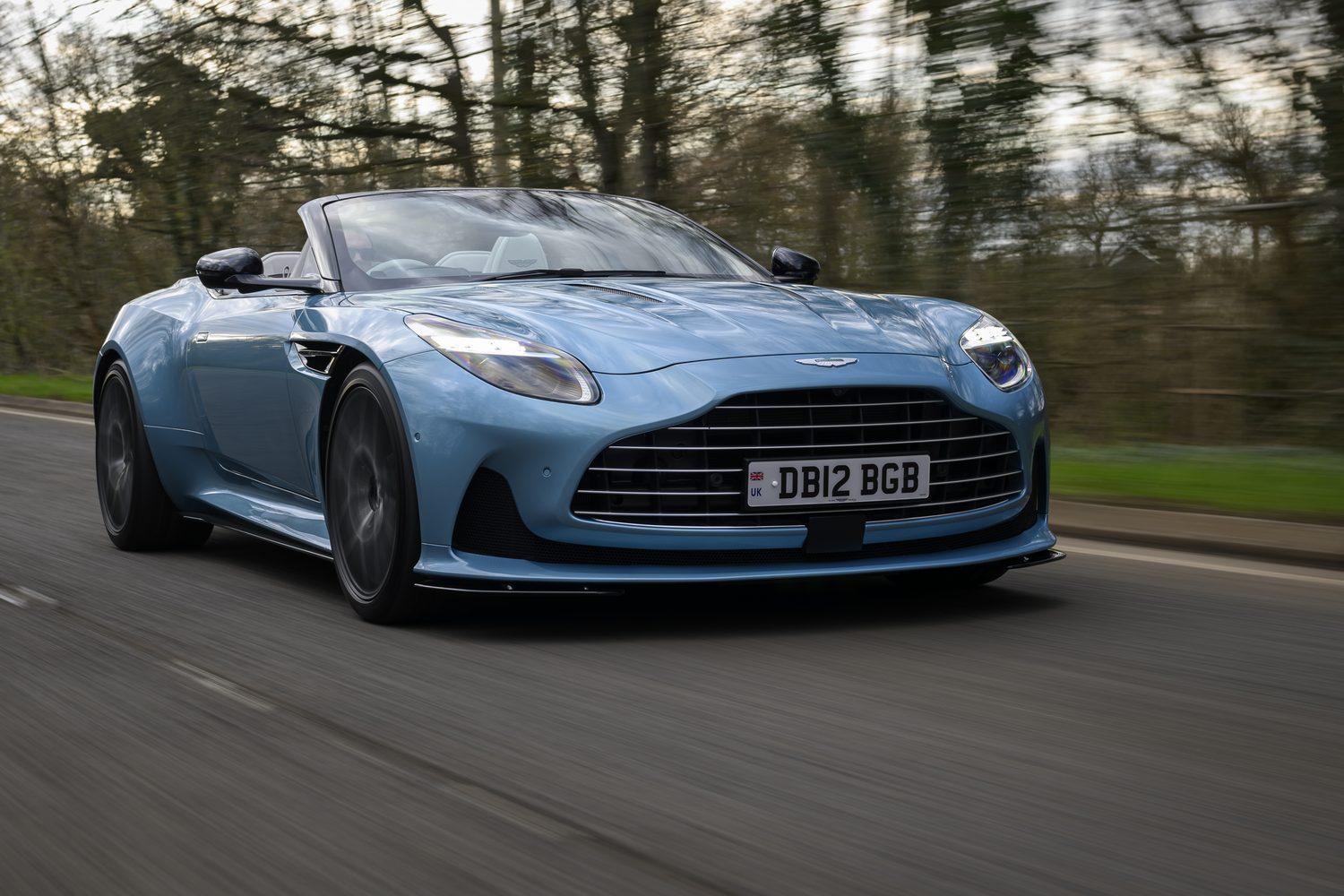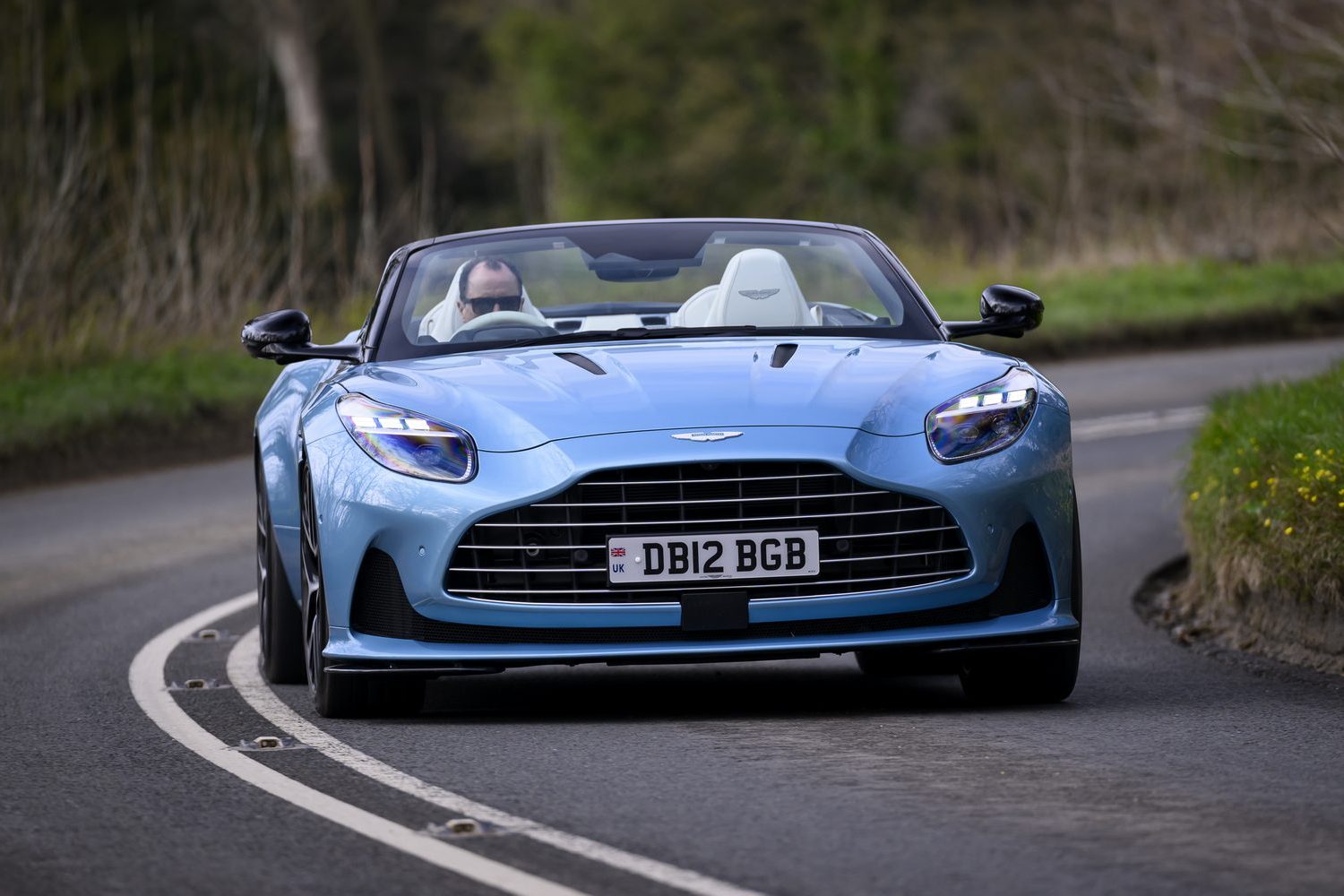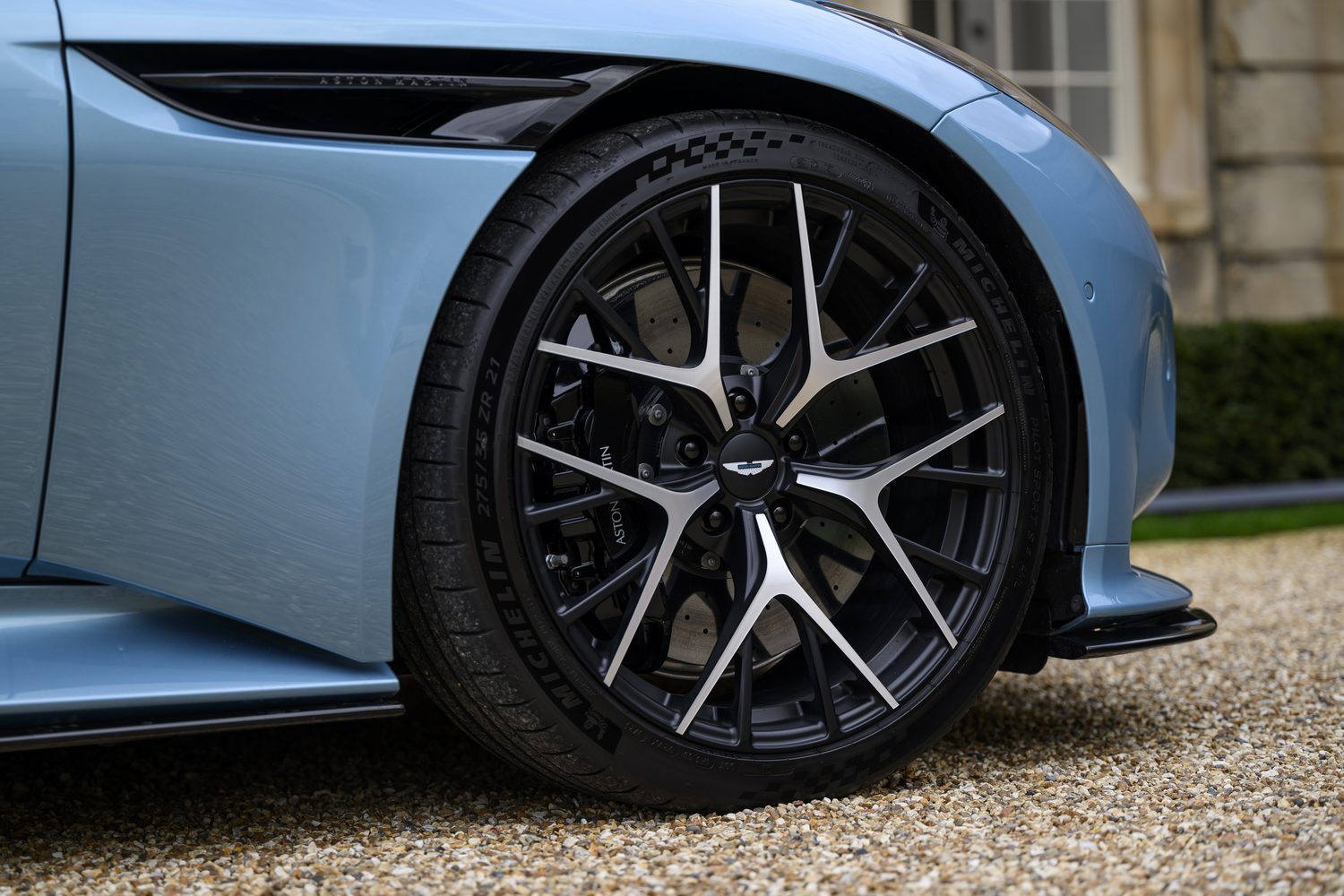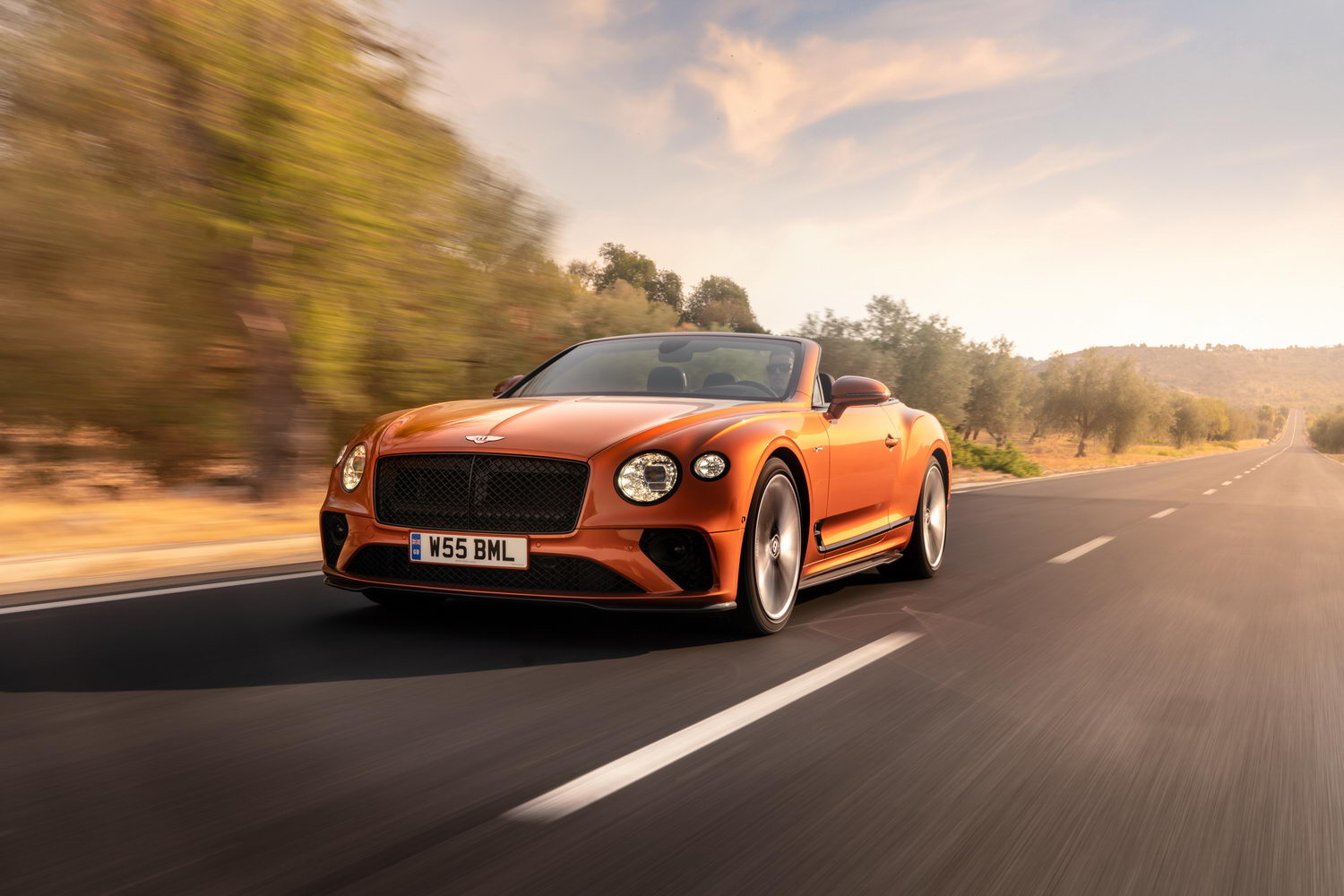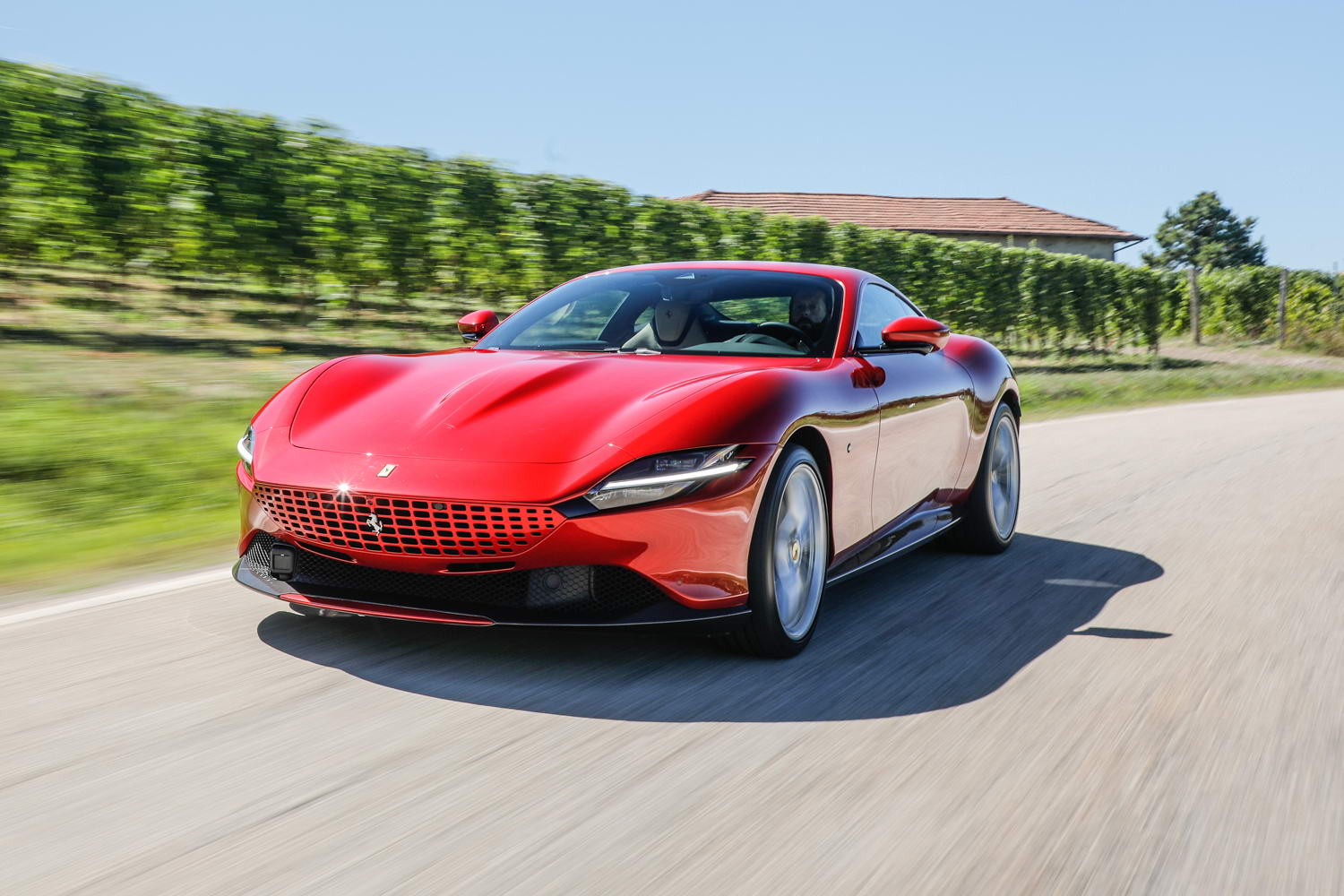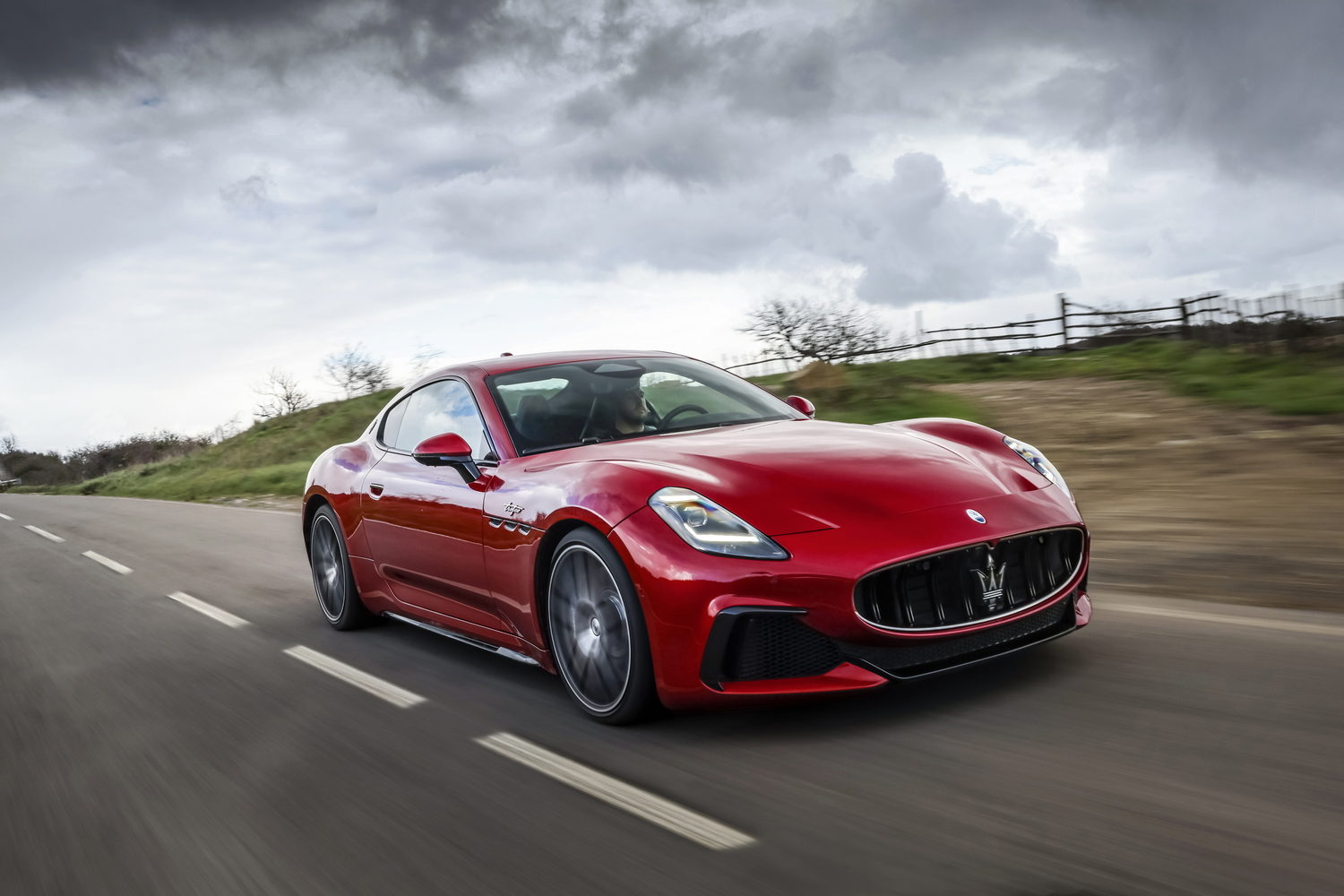Volante - Italian for flying - is a badge that dates back to 1965 as far as Aston Martin is concerned. First applied to a special model known as the Short Chassis Volante (it wasn't called a DB5, even though it looked a lot like one) the Volante name has gone on to become a fixture for Aston and the name associated with most of its convertible models. Now, it's the turn of the new DB12 to adopt the Volante mantle.
In the metal
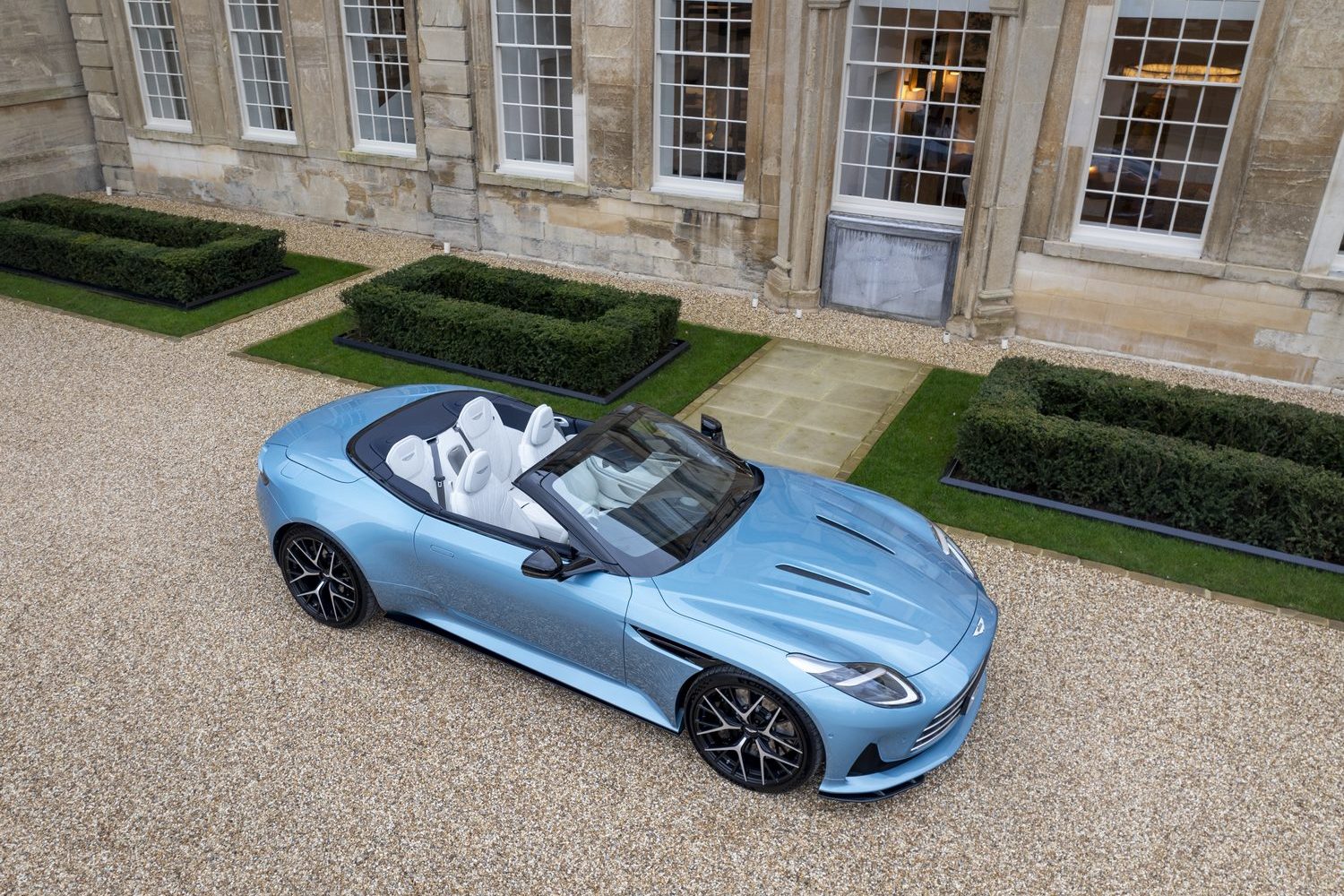
Cars this gorgeous are just not common. There’s little question that the DB12 is a far, far sexier car than the DB11 it replaces. From its gaping grille (lifted more or less directly from the previous Aston Martin DBS Superleggera model) to the rear end that’s much better resolved in its looks than that of the DB11, the DB12 is plain gorgeous. Go on, go and spend some time perusing the photos. I’ll wait.
The DB12 has lost none of its gorgeousness in the conversion to a Volante convertible. Aston Martin says that the soft hood (which features eight layers of fabric and insulation, and which is pretty much as good as an alloy roof at keeping out weather and noise) folds with what it calls a ‘K-mechanism’. This allows for a low stack height - just 260mm - when the roof is folded, which means that it tucks out of sight underneath a powered tonneau cover in a manner which is, to say the least, pleasing to the eye. I’m more of a coupe guy than a convertible guy, but the roof of this DB12 Volante is so impressive in its fit, finish and function that I could be tempted to change my tune...
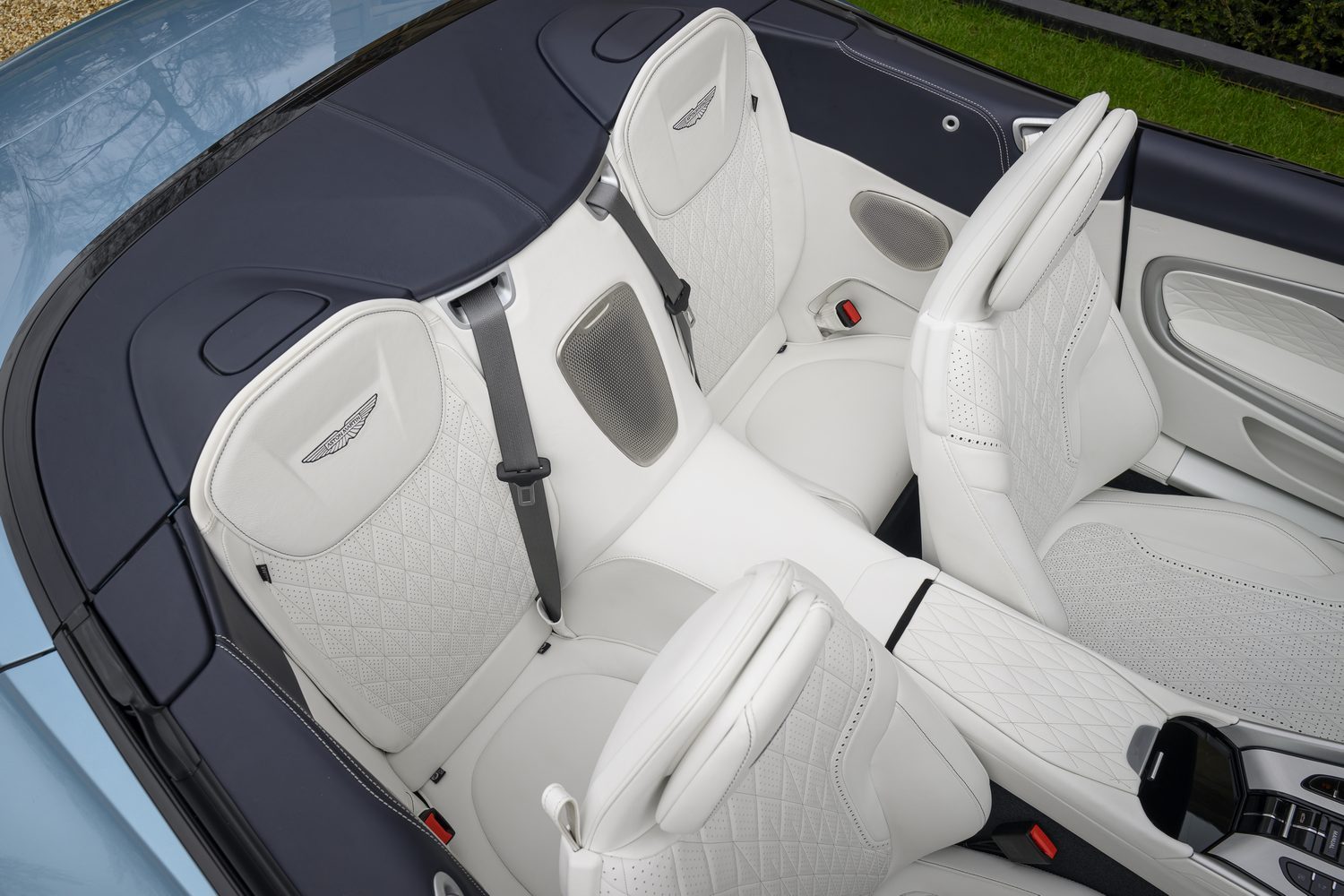
Impressively, the basic structure of the DB12’s extruded, riveted and bonded aluminium chassis was sufficiently structurally sound that it didn’t need any additional bracing to compensate for the loss of the roof panel - and the extra 90kg that the soft-top mechanism adds to the DB12’s kerb weight. All that has been done under the skin is the addition of some structural elements to the suspension pick-up points, and the altering of the spring and damper rates.
Inside, there are equally few changes from the DB12 coupe. Other than the addition of an extra toggle switch to control the roof, the cabin is the same, with that upward-sweeping centre console home to most of the major controls.
Thankfully, although there is an impressive touchscreen at the top of that console, Aston still believes in physical switches and buttons, and most of these are bespoke to the DB12. The metal roller switches for stereo volume (there’s an optional Bowers & Wilkins system with up to 1,170 watts of power...) and cabin temperature are wonderfully tactile, as is the little Porsche-style flick-switch for the ZF eight-speed, rear-mounted, transaxle. There are some Mercedes bits and pieces visible throughout the cabin, though and the main digital instrument pack is a bit of a let-down, as it just doesn’t look special enough for a car at this price level and could have come from any mid-size family car.
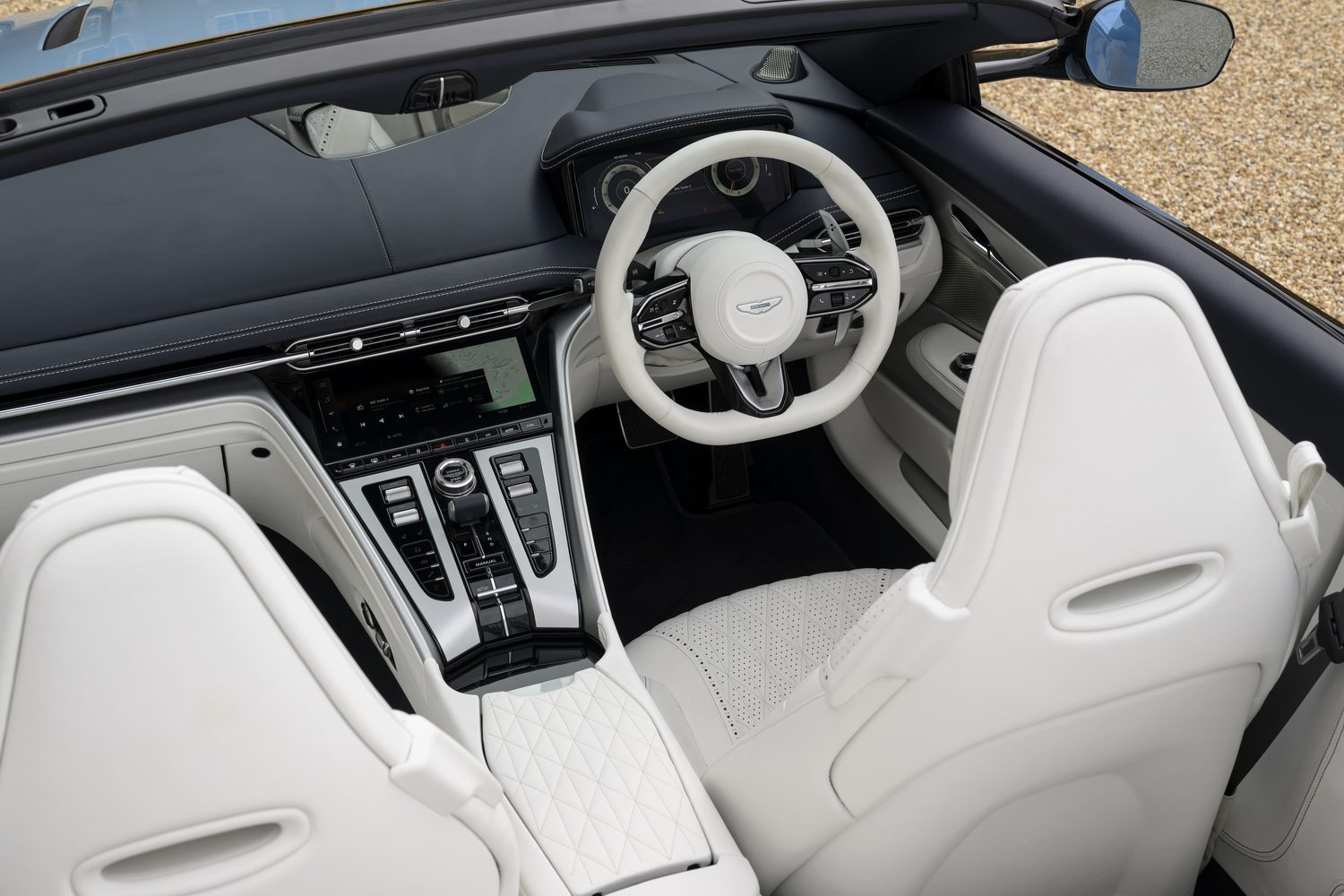
However, the DB12’s cabin is a massive step forward from that of the old DB11. It’s quite plainly styled, but beautifully finished and looks and feels like an interior that will prove deeply satisfying to use over the long term.
Front seat comfort is predictably excellent, but anyone trying to get into the ‘+2’ rear seats is either going to have to be microscopically small or have lost some sort of wager. They are tiny and are best thought of as a leather-wrapped adjunct to the 206-litre boot.
Driving it
You could rightly reckon that such a gorgeous car deserves a mighty V12 but the 4.0-litre twin-turbo V8 from Mercedes-AMG is still a thing of wonder. With 680hp and 800Nm of torque, it can propel the DB12 to 100km/h in just 3.7 seconds (impressive for a car with rear-wheel drive only - the bespoke Michelin Pilot S5 tyres must help...) and on to a top speed of 325km/h. If you have the space and legality to do so.
At low speeds, this mighty engine is spectacularly docile. While it bursts into life with the usual Aston Martin flare of revs, when you're cruising along in 'GT' mode, it's quiet enough that you can hear the birds chirruping in the hedgerows as you pass. Aston says that its driving modes setup is far more powerful, from both a hardware and software point of view, than before and so moving from GT to Sport or Sport + mode has a much more profound effect. There are also 'Wet' and 'Individual settings, but the crucial factor is that you can independently control both the suspension firmness (through Comfort, Sport, and Sport + levels) and the loudness of the sports exhaust independently of the general driving mode.
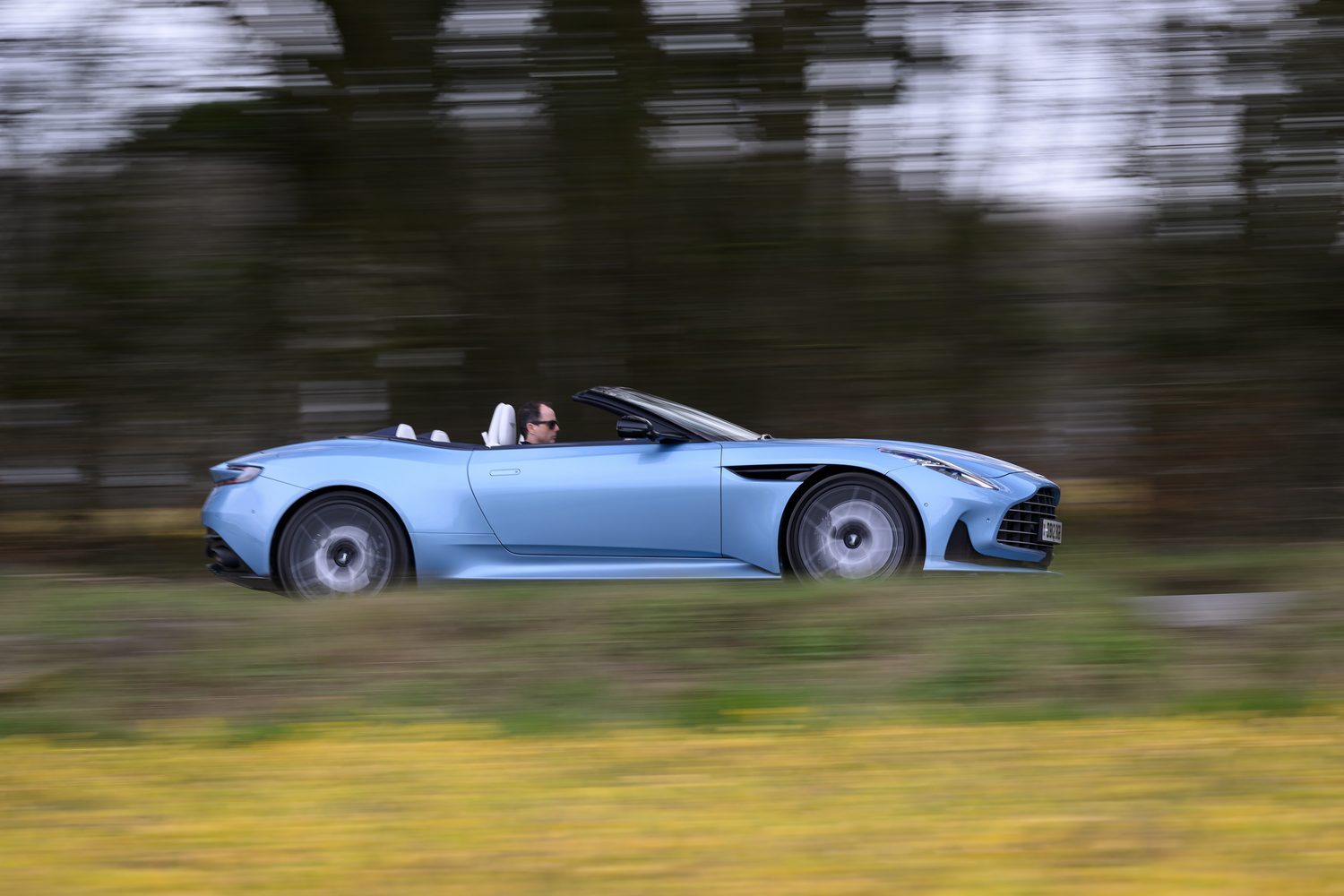
So, you can have the steering, engine and gearbox set to Sport, while the dampers are in Comfort and the exhaust is in Sport + - which proves to be just about the ideal setting for tackling the kind of lumpy, broken roads that wind their way through the Cotswolds of Oxfordshire and Northamptonshire, where we were testing the DB12.
The DB12 can be a bit intimidatingly broad of beam on narrow roads (the upcoming new Vantage would doubtless prove a better companion in that regard) but the way the supple springs and dampers cope with bumpy tarmac, even as you're sending as much of that mighty engine's power to the road as you safely and responsibly can do, is quite remarkable.
Aston Martin refers to the DB12 as a 'Super Tourer', a car that combines supercar pace with Grand Tourer refinement and comfort, and I reckon it might be onto something. Certainly, when the road opens up enough, the DB12 Volante is blisteringly fast, with an engine note that sounds like well-educated thunder (and which is quite distinct from the sound AMG cars make), yet it never misbehaves, and never thumps with unruly messiness into obstructions.
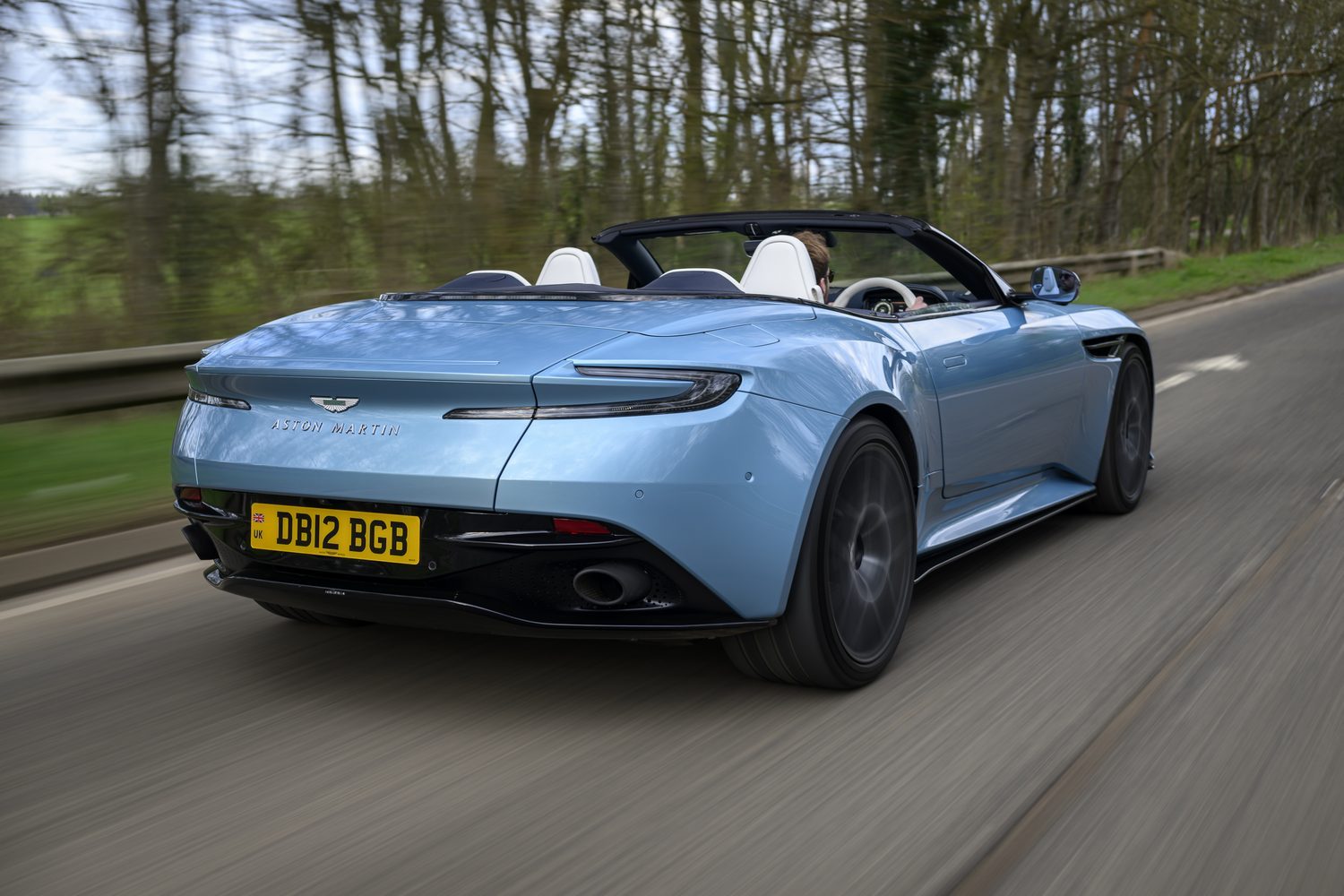
What's really impressive, and which is a result of how far back in the chassis the engine is mounted, is how light and agile the nose of this front-engined car is when you start tackling fast-but-narrow corners. There's good feel from the steering, so despite the width, the DB12 Volante feels more biddable than you might have been expecting. Good brakes help - the standard steel discs, 400mm at the front, are probably good enough, but our test car had the optional carbon-ceramic brakes. These need a bit of a dab on the pedal to wake up properly, but once that's done, they haul this big and heavy car back down to walking pace without apparent effort.
What you get for your money
There's little point in comparing the DB12 Volante to its rivals with any sense of logic nor objectivity. Cars at this price level - and a Volante is likely to set you back at minimum €450,000 to import into Ireland - are bought entirely with the heart, not the head, though it may be helpful to point out that the DB12 Volante should be a bit more affordable than a Ferrari Roma Spider, but probably rather pricier than a Bentley Continental GTC. Does that matter? Hardly...
Summary
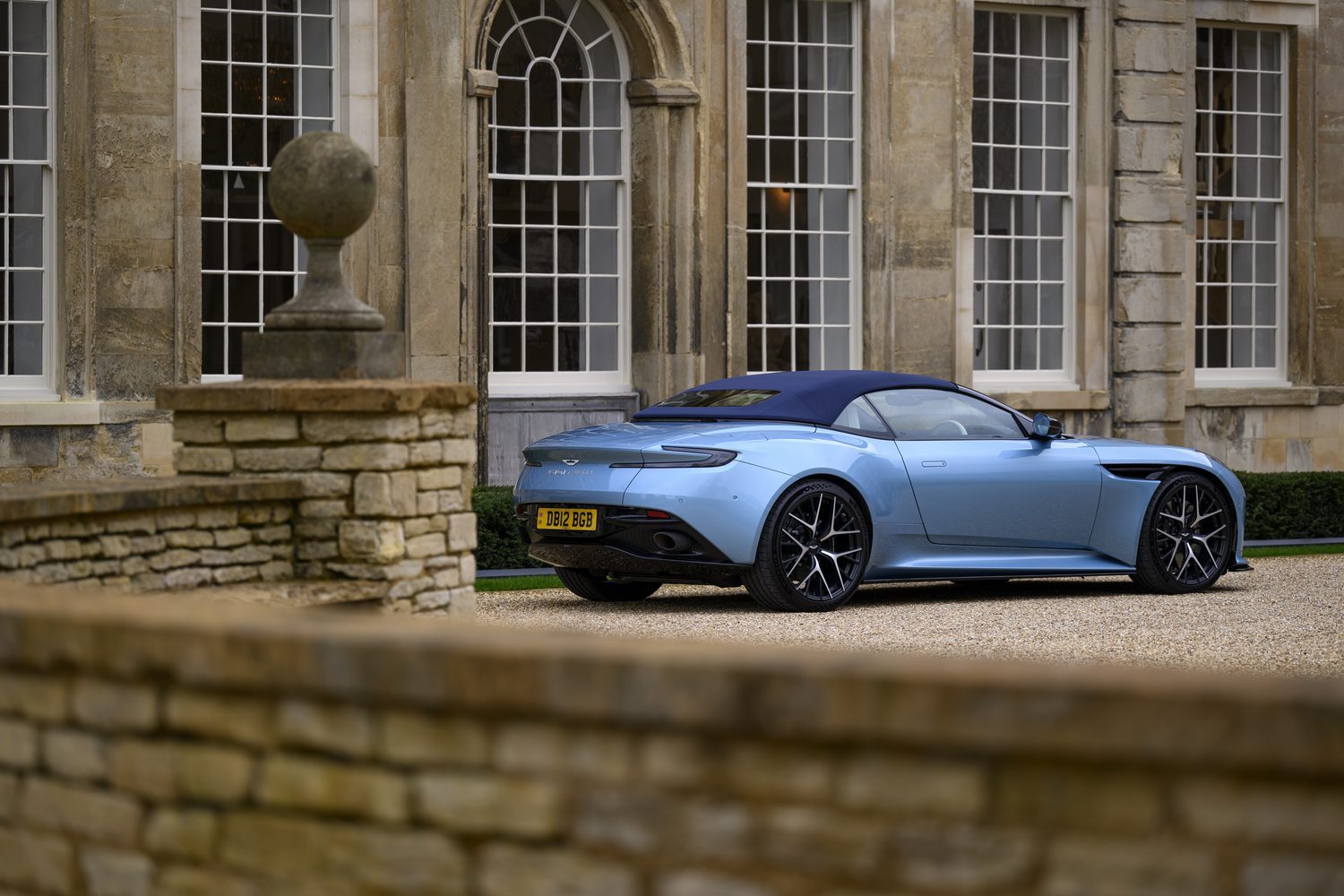
If you're trying to be sensible, then the Aston Martin DB12 Volante is a very silly car. It's wildly expensive, seats only two (realistically), is incredibly thirsty, wide and attention-getting. All true, but none of that matters. When a car is this incredibly good to look at, and this good to drive, all common sense just flies right out the window.

